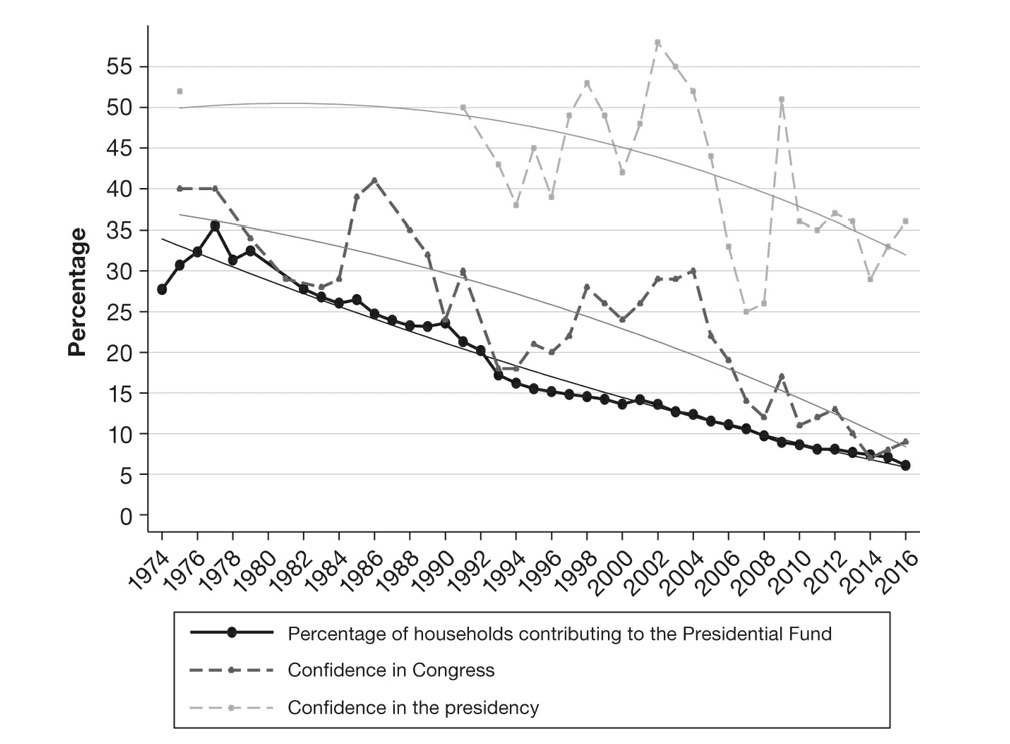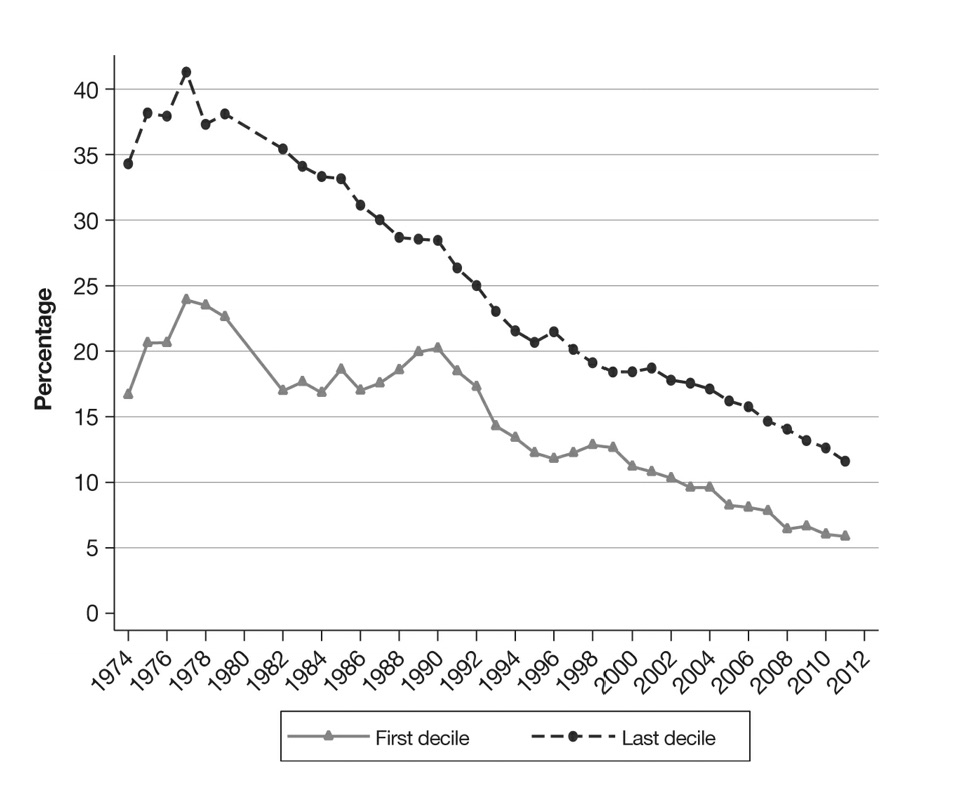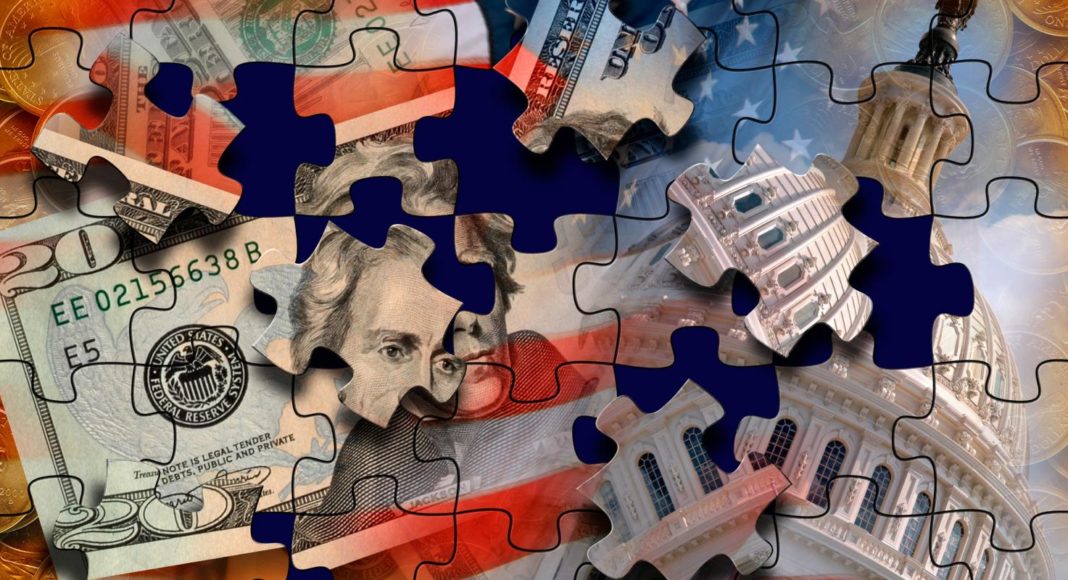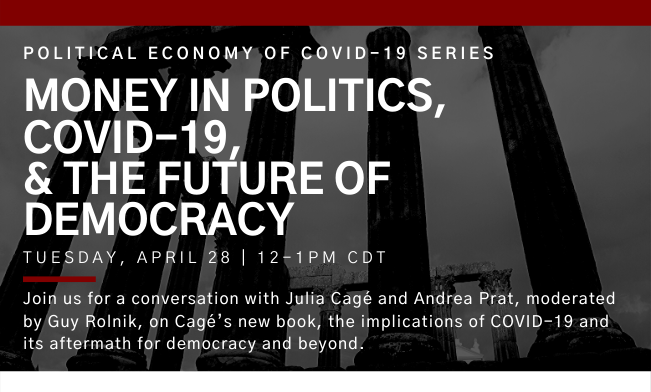Through 2004, all candidates in the general presidential election opted for public funding and reimbursement of their campaign expenses. Then, in 2008, Barack Obama became the first to give up public funding. Obama’s decision in 2008 marked the beginning of the end for the public funding of democracy in the United States.
Editor’s note: Join us for a conversation with Sciences Po Paris professor Julia Cagé and Columbia Business School professor Andrea Prat on Cagé’s new book, The Price of Democracy: How Money Shapes Politics and What to Do About It and the implications of the Covid-19 crisis and its aftermath for democracy and beyond.
In the United States, following a history in some ways reminiscent of Italy’s, the last few years have witnessed an end to the federal system of publicly funded democracy. As I show in my book The Price of Democracy: How Money Shapes Politics and What to Do About It, this essentially involved the reimbursement of campaign spending by candidates in the presidential election.
There was always a possibility that the system would collapse, since public funding was never obligatory; candidates always had a choice between opting in (at the price of a ceiling on expenditure and a ban on private donations) and opting out (with the freedom to spend unlimited sums).
Through 2004, all candidates in the general presidential election opted for public funding and reimbursement of their campaign expenses. Then, in 2008, Barack Obama became the first to give up this public funding, so that he could spend more than the limit of $84.1 million (which his opponent, John McCain, adhered to). Obama’s decision in 2008 marked the beginning of the end for the public funding of democracy in the United States, and since 2012 all candidates in the general presidential election have systematically rejected public funding. To repeat: their aim in doing this has been to avoid any constraints on the total amount they can spend.
Of course, it is impossible to know how things would have turned out if Barack Obama had not declined public funding—and thereby broken one of his campaign promises—in 2008. Perhaps Mitt Romney would still have chosen to cross the Rubicon himself four years later; perhaps, by spending more, he would have achieved the Republican dream of making Obama a one-term president. But although we cannot know what would have happened, it is distressing to observe that it was a Democratic candidate who cast the first stone at public funding—an edifice that has now totally crumbled.
Barack Obama’s choices during his two terms scarcely improved the situation. True, he was not responsible for Citizens United—the Supreme Court ruling in 2010 that shattered all the constraints on corporate and other private funding of elections in the United States. But what he can be blamed for is that in 2012, having staunchly opposed the ruling and come out in public against the very existence of super PACs, he encouraged his supporters to make donations to the super PAC, Priorities USA Action, that backed his campaign. How was that to be interpreted if not as downright cynicism? “Sure, there shouldn’t be any super PACs, but all the same, don’t forget to contribute to mine!”
Similarly, in 2014, Barack Obama decided to end the public funding of national party conventions, which until then had been subsidized by the Presidential Fund. On April 3, 2014, to be absolutely precise, the president signed the Gabriella Miller Kids First Research Act, which abolished the right of party national committees to draw on the Presidential Fund for their election campaigns. No doubt it was a cause for rejoicing that pediatric research would from then on be properly funded in the United States, but why should this have been to the detriment of the public funding of elections?
Above all, why should it have been flaunted in such a way as to suggest that the public funding of elections was not worthwhile, as if the money spent on this in the past had been wasted at the expense of more fundamental public goods? I specified the date of the act, April 3, 2014, not to bore the reader with superfluous details but to underline the historical irony. The day before—on April 2, 2014—the US Supreme Court ruling in the McCutcheon v. Federal Election Commission case had relaxed a little more the campaign funding rules by removing the ceiling on individual donations.
A Climate of General Mistrust
We should bear in mind, however, that Barack Obama made these political decisions in a long-growing climate of general mistrust, which the Democratic president had not had the courage to confront. Almost from the outset, the Presidential Fund system had been the victim of its own unpopularity—which proves, in my eyes, not that all such systems are doomed to failure, but, on the contrary, that it is necessary to look closely at how they work if a more effective and more widely accepted system is to be developed.
Figure 1 shows, for each year since its creation in 1974, the percentage of taxpayers who chose to contribute to the Presidential Fund. Since it cost citizens nothing to check the fund box on their tax return—an easy-to-see box in black and white—one might have expected the percentage to be very high. But that was by no means the case. The percentage has continually declined from a peak of 35 percent (in 1977) to a bare 5 percent today.
To what extent is this due to a simultaneous collapse of confidence in American political institutions? It is, of course, impossible to trace a causal link between the two phenomena, but it is interesting to note the strong correlation between falling numbers of contributors to the fund and the collapse of confidence in political institutions, particularly Congress (which fell below 10 percent in 2013). Confidence in the presidency is higher but also more volatile, albeit with a similar, though less pronounced, downward trend. In 2016, barely 35 percent of Americans expressed confidence in their president.
These figures fell again in 2017 in the first year of the Trump administration, and although it was unclear how they would evolve in September 2018—as the French edition of this book went into print—there is likely to be a further decline in confidence, given the unpopular and erratic nature of many of the decisions taken by Trump since his investiture.

Thus, while the turnout in US presidential elections has varied between 50 and 60 percent over the past forty years, only a small minority of voters express—through their tax return—a wish that the election should be funded by public money. Furthermore, this minority is unrepresentative of the population as a whole.
If we consider the percentage of contributors by income level, we find that the lowest-income Americans (the first decile of income distribution) have always chosen in much smaller numbers than the richest tenth decile to contribute to the Presidential Fund (Figure 2).16 Today, the difference between the two groups is nearly six percentage points, and although the richest Americans seldom contribute to the fund, the percentage of those who do so is twice as high as in the lowest income group. Interestingly, however, the propensity to contribute in the two groups has followed parallel downward trends ever since the 1980s.

It is worth trying to understand why the fund is so unpopular. Clearly, if we look at Figures 1 and 2, this is not linked to the fact that presidential candidates (Democrats since 2008, all candidates since 2012) have chosen to miss out on public funding; the unpopularity of the fund goes much farther back. In my book, I discuss the arguments that may be made against the public funding of presidential elections; it seems to me that most of them, if pursued to their logical end, do not hold water.
But it is impossible to ignore a general sense of the uselessness of political parties. Why, people say, should we fund party full-timers (who for the most part have never really worked, who think only of power, and so on—the list is well known) when we could use the same sums of money to run schools or hospitals? I think that the first weakness of the US Presidential Fund is that it has not offered American citizens the choice of party that they wish to finance. To “politicize” the fund, by allowing them to decide whether their $3 should be used to fund the Democratic or the Republican Party (or any other party, for that matter), would be a first step toward restoring part of its effectiveness.
In a way, this is the idea behind my proposed Democratic Equality Vouchers: each citizen can choose to indicate on his annual tax return the political movement to which he would like his seven euros of public money to be allocated (but it could be three euros in the case of the United States—the precise amount is not important here).
The second weakness of the existing Presidential Fund is that, although the tax return clearly indicates that there is no effect on the individual’s tax liability, a number of citizens may still think it would cost them something to check the fund box and therefore prefer not to do so. This would suggest that more (and better) efforts should be made to communicate with citizens about the opportunity that is being given to them.
Finally, as we have seen above, the most astonishing feature of the fund established in 1974 is that it has never linked the size of the fund (determined by citizens’ contributions) to the size of the reimbursements (since the ceiling on expenses in the presidential election is set independently of the success of the fund).
This inevitably creates the sense of a pointless gadget, or, worse still, makes citizens feel that they are being led up the garden path. How can one fail to understand the mistrust of people who are attributed an illusory power?
Excerpted fromThe Price of Democracy: How Money Shapes Politics and What to Do About It by Julia Cagé, published by Harvard University Press. Copyright © 2020 by the President and Fellows of Harvard College. Used by permission. All rights reserved.







